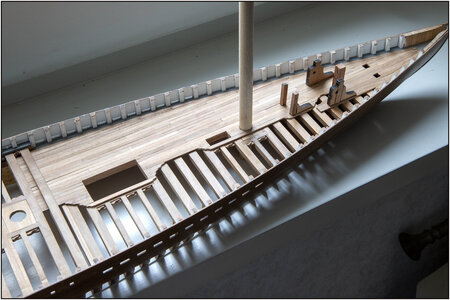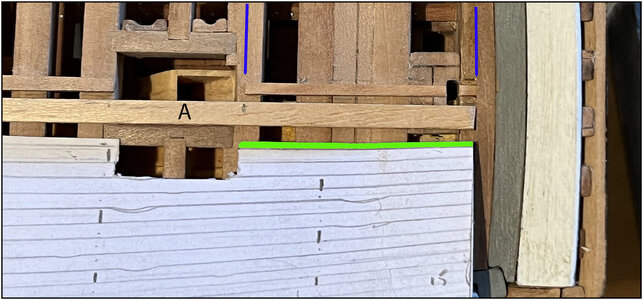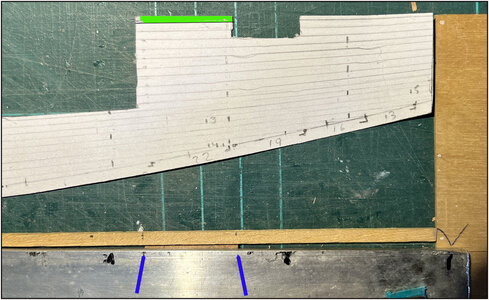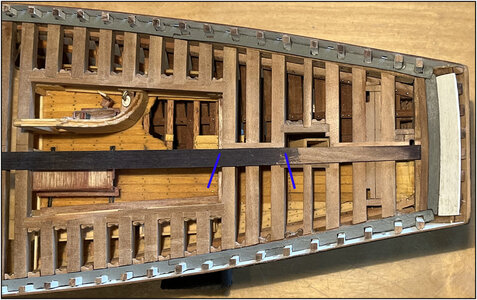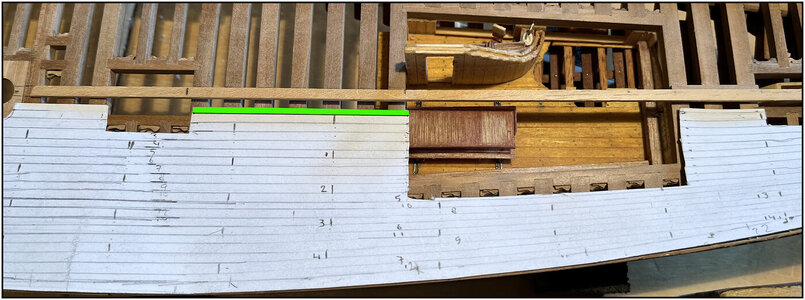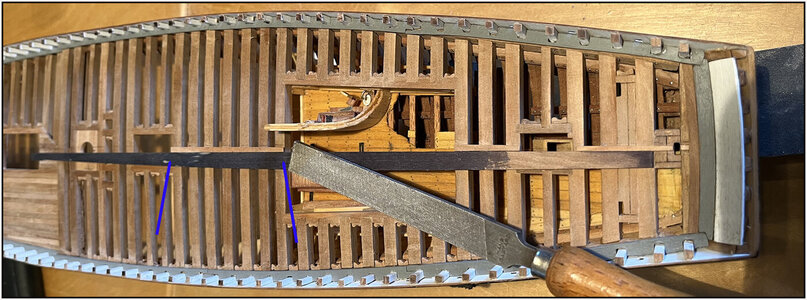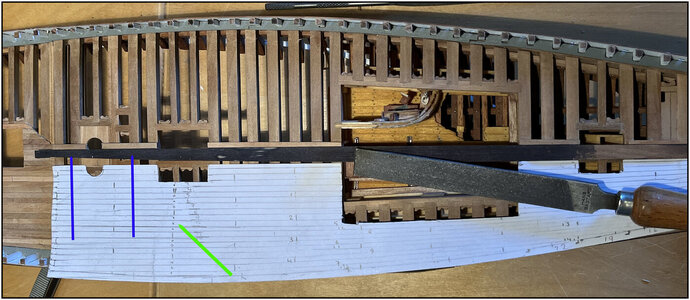You can say that, Johan. Especially about how I'm going to rejuvenate the planks. But I have not count the minutes/hours .......

In the end:
View attachment 300142
Place a beam to be bent on the side of an aluminum strip. Left connected to the outside and secured. Then on the right side, over a length of +/- 25 cm, bent slightly more than 1 mm down so that I got a smooth flowing curve. Because I have to go with my planks from 2.6 mm to 1.5 mm. Then a groove is made in the aluminum along the beam with a knife. That groove accentuated black to have a better view to file the curve along the black line.
View attachment 300143
At the bottom of the picture the aluminum strip with the curve, but you have to have a good eye to see that in the photo.

Cut a corner hook in a piece of plywood of 1mm.
Marked on the plywood where the plank connections come every 3-deck-beams. Depending on the position on the deck and therefore on the basis of my drawn template, I can now make an assembly of planks that I need per row. As with planking the hull, I don't use long planks because then I have a high chance of continuous grain at plank seams. But I'm probably going to cut some long planks in their entirety, then shorten them and interchange them.
Use a long plank as a test. Place this against the edge of the plywood with markings.
View attachment 300144
The aluminum strip is on the left secured to the outside of the plank. Then secured the right side at just over 1 mm lower.
The aluminum strip fixes the plank well because my planks are just a bit thicker than 1 mm.
With a new sharp scalping blade then cut away the wood that goes from 0.0 to 1.1 mm along the aluminum strip.
View attachment 300145
The small irregularities created by the wood fibers are sanded down on a long sanding block so that the curve will run nicely.
The curved cutted side is put to the outside en tested on my test sheet.
Now a few more test strips to see if I will get a nice fitted and flowing pattern.
There must be other ways to rejuvenate a plank. The ones I found were to cut the rejuvenation in a straight line. But I must have a curve in it, otherwise I will not get a rounded connection at the end of the circular waterways.
Regards, Peter





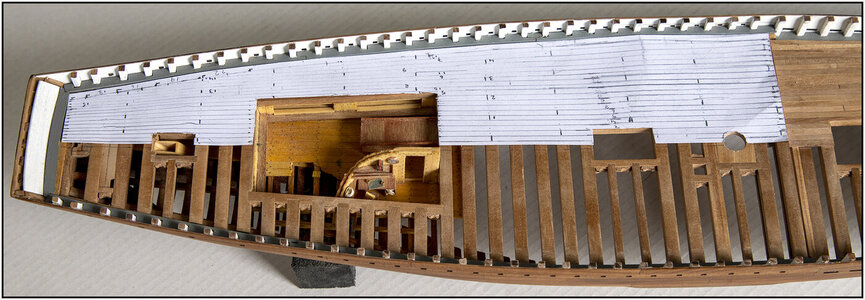

 Nice to have friends on the SoS!
Nice to have friends on the SoS!






